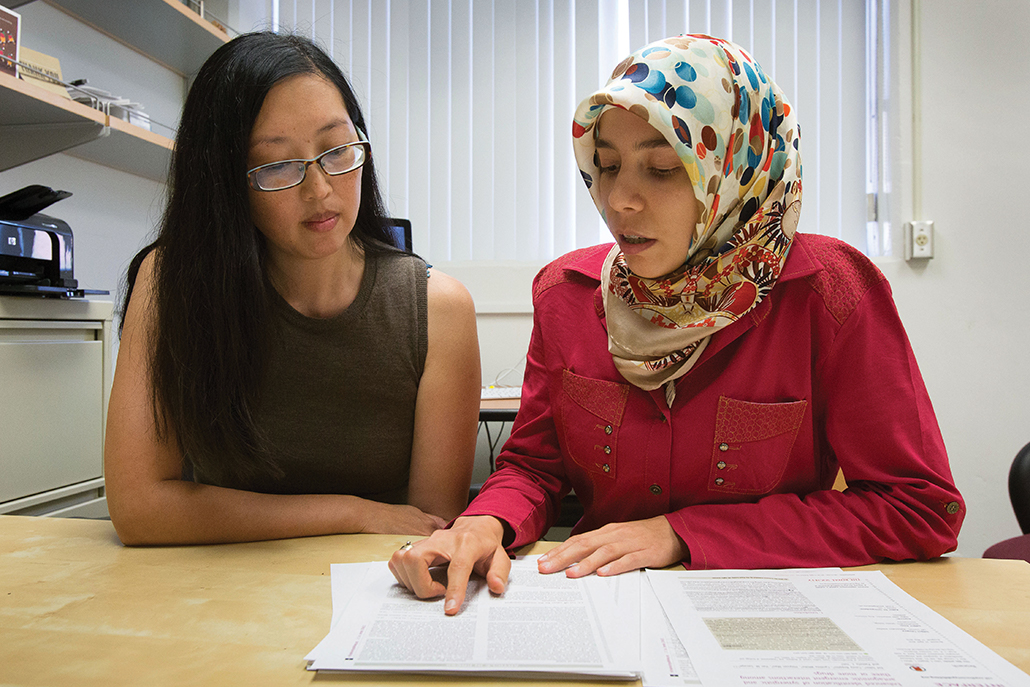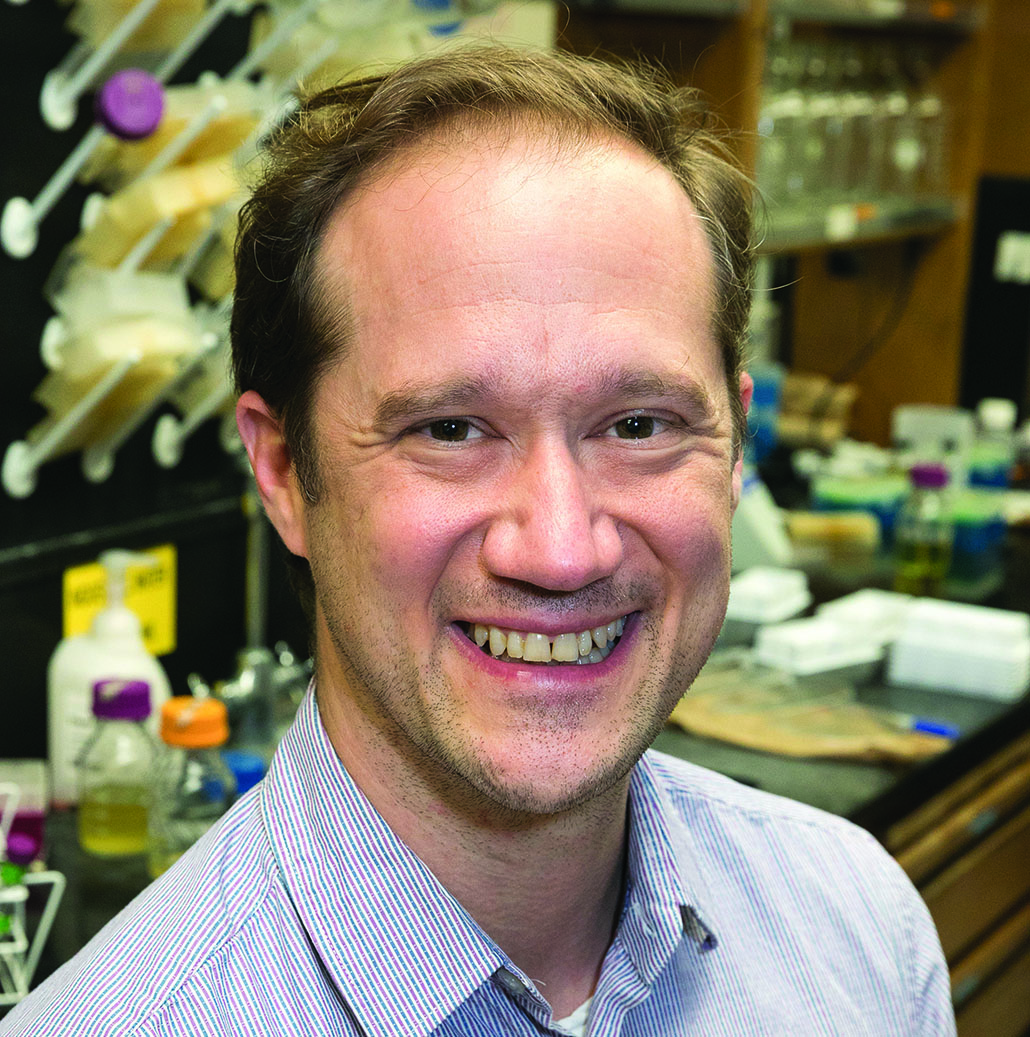8,000 NEW ANTIBIOTIC COMBINATIONS ARE SURPRISINGLY EFFECTIVE

Pamela Yeh (left), with Elif Tekin
By Stuart Wolpert
Remarkably, 8,119 new combinations of antibiotics are surprisingly effective at killing harmful bacteria, UCLA biologists reported Sept. 3 in the journal npj Systems Biology and Applications (a Nature research journal). The discovery of so many potent new antibiotics may help avert a post-antibiotic era in which severe, antibiotic-resistant pathogens and common infections can injure and kill large numbers of people, as the World Health Organization warned in a 2014 report on antibiotic resistance as a worldwide threat to public health.
Analyzing eight antibiotics that are grouped by six mechanisms of attacking E. coli bacteria, the researchers tested every possible combination of four antibiotics, and five antibiotics at a time. The researchers expected some of the combinations would be very effective, but were startled by how many potent combinations they discovered.
“We expect several of these combinations, or more, will work much better than existing antibiotics,” said Pamela Yeh, assistant professor of ecology and evolutionary biology and one of the study’s two senior authors.
“We shouldn’t limit ourselves to just single drugs or two-drug combinations in our medical toolbox. There is a tradition of using just one drug, maybe two; we’re offering an alternative that looks very promising.
“Traditionally, scientists have thought the interactions among many drugs combined — such as four and five drugs together — would be too small to matter, or would cancel one another out. We have shown that is not the case.”
The biologists tested 5,670 four-antibiotic combinations and 12,608 five-antibiotic combinations, including many where they tested varying dosages.
The researchers report that 1,676 four-drug combinations are unexpectedly effective at decreasing the growth of E. coli bacteria and 6,443 five-drug combinations are substantially more effective at killing the bacteria than the scientists predicted based on their knowledge of how pairs of the antibiotics work together.
Surprising results
“I was blown away by how many effective combinations there are as we increased the number of drugs,” said Van Savage, professor of ecology and evolutionary biology and of biomathematics and the other senior author. “People may think they know how drug combinations will interact, but they really don’t.”
Why are these multidrug combinations so effective?
“Some drugs attack the cell walls, others attack the DNA inside,” Savage said. “It’s like attacking a castle or fortress. Combining different methods of attacking may be more effective than just a single approach.”
“A whole can be much more, or much less, than the sum of its parts, as we often see with a baseball or basketball team, and as we are finding when combining antibiotics,” Yeh said. She cited the decisive upset victory of the 2004 Detroit Pistons — a cohesive team with no superstars — over a Los Angeles Lakers team with Kobe Bryant, Shaquille O’Neal, Karl Malone and Gary Payton, and coached by Phil Jackson, in the NBA championship.
Scientists must combine antibiotics carefully and methodically. In this study, 2,331 of the four-drug combinations had reduced effectiveness compared with two-drug and three-drug combinations, and 5,199 of the five-drug combinations had reduced effectiveness compared with those with two-, three- and four-drug combinations, said lead author Elif Tekin, who conducted the research as a postdoctoral scholar in both Yeh’s and Savage’s laboratories.

Van Savage
New mathematical model tested
The biologists developed and used a mathematical formula for analyzing how multiple factors interact. They call their framework Mathematical Analysis for General Interactions of Components (MAGIC).
“We think MAGIC is a generalizable model that can be applied to other diseases, including cancers, and in many other areas with three or more interacting components to better understand how a complex system works,” Tekin said.
The research team reported in 2016 that combinations of three antibiotics can often overcome bacteria’s resistance to antibiotics, even when none of the three antibiotics on its own — or even two of the three together — is effective. The biologists reported in 2017 two combinations of drugs that are unexpectedly successful in reducing the growth of E. coli bacteria and provided the first detailed explanation of how they created their mathematical framework that can help predict which combinations of drugs will be most effective.
Other co-authors of the new research are Cynthia White, who conducted research in Yeh’s laboratory for four years as an undergraduate and worked on this project as a research technician after she graduated; Tina Kang, a doctoral student in Yeh’s laboratory; Nina Singh, an undergraduate in Yeh’s laboratory; Mauricio Cruz-Loya, a doctoral student in Savage’s laboratory; and Robert Damoiseaux, professor of molecular and medical pharmacology, and director of UCLA’s Molecular Screening Shared Resource.
The research was funded by a James S. McDonnell Foundation Complex Systems Scholar Award, the National Science Foundation, the Hellman Foundation, the National Institutes of Health/National Center for Advancing Translational Science, and a UCLA Faculty Career Development Award.



